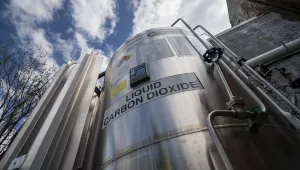Summary
Coal-based generation appears likely to remain the linchpin of the Indian power sector at least for the next few decades, given the large domestic coal resources and the absence of any other significant domestic energy sources in the country. Coal power will, thus, help increase the availability of electricity, particularly in rural areas, which is an urgent development priority for the country. Given the enormous financial resources required to achieve this objective, the power sector has strong incentive to deploy cheaper, well-proven generation technologies.
At the same time, climate change increasingly is recognized as an important issue for India, given the range and magnitude of the possible impacts. Even as India and other developing countries await stronger action by industrialized nations, policymakers have begun to explore ways to advance the country’s development agenda while reducing greenhouse gas (GHG) emissions. Recently, the Indian Prime Minister constituted a Council on Climate Change to “coordinate national action for assessment, adaptation and mitigation of climate change.” There is, however, widespread agreement within the country that its low per-capita emissions and development imperatives necessitate a deliberate approach to GHG mitigation.
The major challenge facing India is how to reconcile rapid growth in the coal-power sector with the increasing urgency to address climate concerns. Appropriate actions and policies that offer climate co-benefits in the present could lay a foundation for an eventual, broader carbon mitigation strategy in the future, and help transition the coal-power sector to a cleaner and more sustainable path. With this in mind, we suggest several immediate steps that can help reduce carbon emissions from the Indian coal-power sector in the short term while offering significant development benefits:
• Improve efficiency of all elements in the existing power system: generation, transmission and distribution, and end-use;
• Aggressively deploy higher-efficiency pulverized coal combustion technologies, such as supercritical and ultra-supercritical technologies;
• Create a program for systematically assessing emerging technologies that may become important for the medium- to long-term future of the coal power sector, and develop a strategic national plan for development, adaptation and deployment of suitable technologies;
• Establish and enforce emissions standards for sulfur oxides (SOx) and nitrogen oxide (NOx), and provide incentives for installing pollution-control technologies, such that carbon capture from Indian power plants is economically feasible in the future, should the country decide to exercise that option; and
• Invest in a focused effort on detailed geological assessment of on-shore and off-shore carbon storage sites in India.
A number of other activities can play a major role in the successful implementation of the technical and programmatic elements listed above. First and foremost, the institutional and financial health of the sector needs to be strengthened; while there has been some progress on power-sector reforms over the past decade, it is important to learn lessons from these recent experiences and tailor India-specific policy solutions. Given the dominance of the government in nearly all aspects of coal and coal-power sectors, it is essential that the different government ministries and agencies share a common sense of vision for the sector, and improve inter-ministerial and regulatory coordination.
Given the interdependence between the coal and the coal-power sectors, it is also important to develop a better understanding of coal resources, and to fashion a set of coherent policies for sustainable growth in the coal sector. Technology analysis and innovation systems in the Indian coal-power sector also require institutional changes and a significant infusion of financial resources. In addition, more attention is needed in the area of domestic policy research and analysis—such analyses are crucial for devising long-term energy policies and successfully implementing them. While many of these activities necessarily will be carried out by government organizations, significant attention also needs to be paid to issues of transparency and wider stakeholder and public participation. The priority should be to ensure that these technology programs and the resulting policies are robust and that they adequately respond not just to the climate challenge but also to the wider challenges facing the Indian power sector.
Finally, international action and cooperation play a crucial role in accelerating India’s technology analysis, innovation, and deployment, as well as broader climate change policies. The advancement and deployment of low-carbon energy technologies in industrialized countries (through concrete policies and actions) can reduce the technical risk and the costs associated with these technologies, which in turn, will determine the options available to developing countries. In addition, industrialized countries could help with technology assessment and analysis to facilitate the selection of appropriate technologies for India. At the same time, it is also important to note that an excessive and premature push on power-sector GHG mitigation in India, particularly by international agencies, might be counter-productive, especially if it is not clear what technologies make sense for India from a long-term perspective and if their technological and economic feasibility is not well demonstrated.
The domestic and international steps outlined in this paper could greatly advance the development and implementation of a GHG-mitigation strategy in the Indian coal-power sector, while allowing the sector to contribute suitably to the country’s energy needs. The key to success will be adopting a deliberate approach, with short- and long-term perspectives in mind, that allows for the development of an integrated energy and climate policy.
Chikkatur, Ananth and Ambuj D. Sagar. “Positioning the Indian Coal-Power Sector for Carbon Mitigation: Key Policy Options.” Pew Center on Global Climate Change, January 2009
The full text of this publication is available via Pew Center on Global Climate Change.






